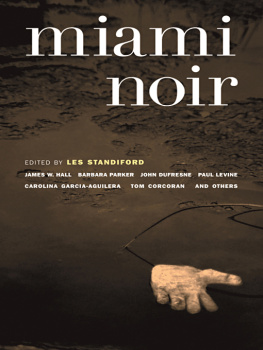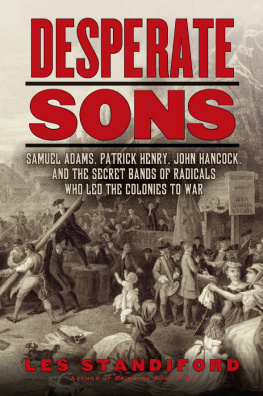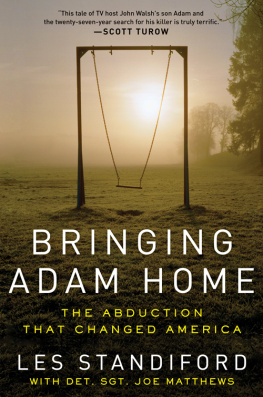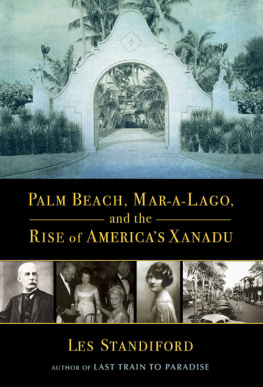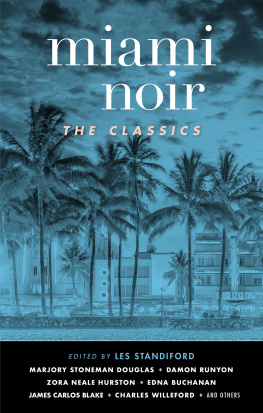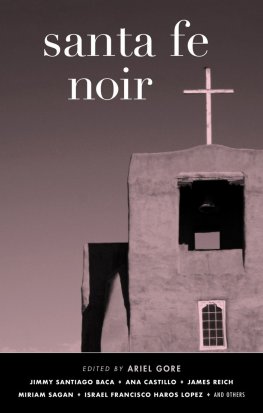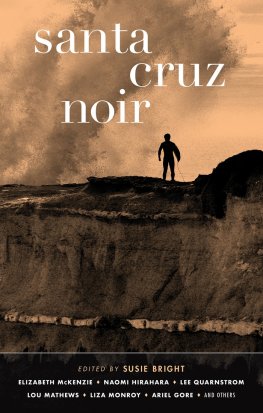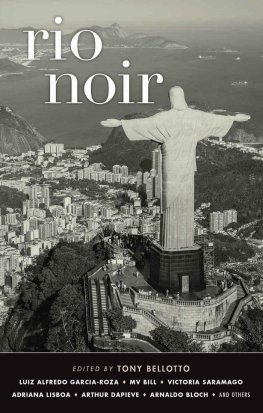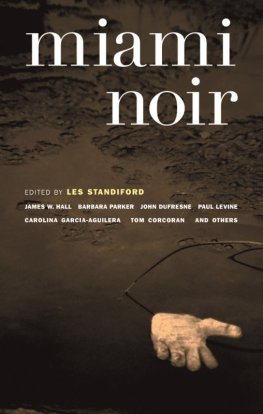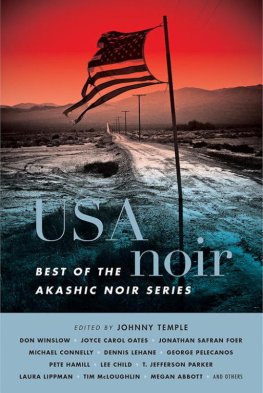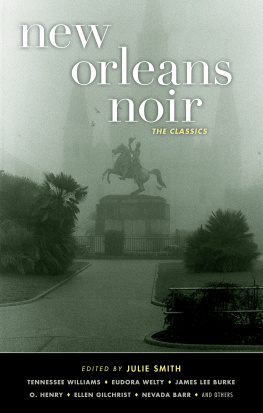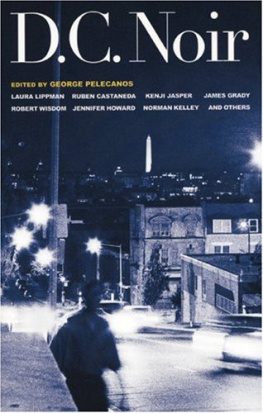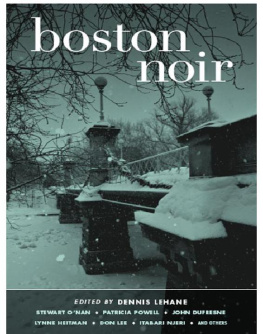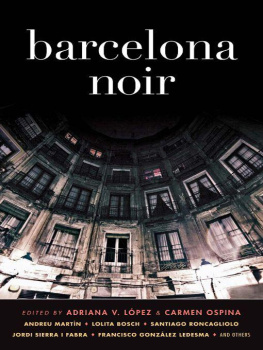Les Standiford - Miami Noir (Akashic Noir)
Here you can read online Les Standiford - Miami Noir (Akashic Noir) full text of the book (entire story) in english for free. Download pdf and epub, get meaning, cover and reviews about this ebook. year: 2006, publisher: Akashic Books, genre: Detective and thriller. Description of the work, (preface) as well as reviews are available. Best literature library LitArk.com created for fans of good reading and offers a wide selection of genres:
Romance novel
Science fiction
Adventure
Detective
Science
History
Home and family
Prose
Art
Politics
Computer
Non-fiction
Religion
Business
Children
Humor
Choose a favorite category and find really read worthwhile books. Enjoy immersion in the world of imagination, feel the emotions of the characters or learn something new for yourself, make an fascinating discovery.
- Book:Miami Noir (Akashic Noir)
- Author:
- Publisher:Akashic Books
- Genre:
- Year:2006
- Rating:3 / 5
- Favourites:Add to favourites
- Your mark:
- 60
- 1
- 2
- 3
- 4
- 5
Miami Noir (Akashic Noir): summary, description and annotation
We offer to read an annotation, description, summary or preface (depends on what the author of the book "Miami Noir (Akashic Noir)" wrote himself). If you haven't found the necessary information about the book — write in the comments, we will try to find it.
Miami Noir (Akashic Noir) — read online for free the complete book (whole text) full work
Below is the text of the book, divided by pages. System saving the place of the last page read, allows you to conveniently read the book "Miami Noir (Akashic Noir)" online for free, without having to search again every time where you left off. Put a bookmark, and you can go to the page where you finished reading at any time.
Font size:
Interval:
Bookmark:
This collection is comprised of works of fiction. All names, characters, places, and incidents are the product of the authors imaginations. Any resemblance to real events or persons, living or dead, is entirely coincidental.
Published by Akashic Books
Series concept by Tim McLoughlin and Johnny Temple
Miami map by Sohrab Habibion
ePUB ISBN: 978-1-936-07038-1
ISBN-13: 978-1-933354-13-2
ISBN-10: 1-933354-13-5
Library of Congress Control Number: 2006923116
All rights reserved
Akashic Books
PO Box 1456
New York, NY 10009
info@akashicbooks.com
www.akashicbooks.com
ALSO IN THE AKASHIC NOIR SERIES:
Brooklyn Noir, edited by Tim McLoughlin
D.C. Noir, edited by George Pelecanos
Manhattan Noir, edited by Lawrence Block
Baltimore Noir, edited by Laura Lippman
Dublin Noir, edited by Ken Bruen
Chicago Noir, edited by Neal Pollack
London Noir, edited by Cathi Unsworth
San Francisco Noir, edited by Peter Maravelis
Twin Cities Noir, edited by Julie Schaper & Steven Horwitz
Brooklyn Noir 2: The Classics, edited by Tim McLoughlin
FORTHCOMING:
Los Angeles Noir, edited by Denise Hamilton
New Orleans Noir, edited by Julie Smith
Havana Noir, edited by Achy Obejas
Bronx Noir, edited by S.J. Rozan
Queens Noir, edited by Robert Knightly
Wall Street Noir, edited by Peter Spiegelman
Detroit Noir, edited by Eric Olsen & Chris Hocking
For the good that I would, I do not:
but the evil which I would not, that I do.
Romans (Ch. VII, v. 19)
TROUBLE & PARADISE
A s both a teacher and a writer, I have often been asked to explain why Miami is such fertile territory for writers who write well and truly of crime and violence and of the dark side of the human condition. Sometimes the question is put out of honest curiosity. Other times, it seems as if there is a challenge there. As if the questioner might have continued, given half a chance: Why arent you writing novels of manners down there? Drawing room comedies? Something literary, for Gods sake?
The former types are finehonest curiosity is a good thing; as for the latter interrogators, they tend to become the models for the victims in our upcoming work. But let there be an attempt at an explanation:
The truth is that Miami, though naturally lovely, is a frontier town, perched on the border between the known and the rarely before experienced. The poet Richard Hugo once said that the natural place for the writer was on the edge, and edge might well be the definitive word when it comes to this city.
We are not only on the edge of the continent, we are to this country what New York was in Ellis Islands heyday, what the West Coast was in the middle of the twentieth century. This is where the new arrivals debark these days, and it is no mistake that during the last decade of the last century, commentators as diverse as Joan Didion, David Rieff, and T.D. Allman devoted entire volumes to Miamis role as the harbinger for Americas future.
All the flux of a beautiful city where everyone is on the make and almost nothing has quite been settled creates an exceptional place for writers to live and workand to put it simply, we write what we observe. Once this part of the world has settled down a bitthe tide of newcomers calmed, all the hustlers gentrified, the gators chased awayperhaps our literary output will morph into something a bit more civilized. But for now, the novel of crime and punishment is the perfect vehicle to convey the spirit and the timbre of this brawling place to a wider world.
Nor is this exclusively a latetwentieth century development: In 1936, Francis Wallace published Kid Galahad, a novel of mob-influenced boxing set in Miami. In the 1940s, Leslie Charteris set an episode or two of The Saint series here. After Charteris came Davis Dresser, a.k.a., Brett Halliday, and his Mike Shayne series of the 40s and 50s, with such understated titles as Die Like a Dog, The Homicidal Virgin, and Blood on Biscayne Bay. In the 1960s, John D. MacDonald cranked the quality of the proceedings up several notches with the debut of his long-running Travis McGee series, set in the slightly less menacing environs of nearby Fort Lauderdale.
But the true founders of the so-called Miami School are Douglas Fairbairn, author of the quintessential Miami noir, Street 8 (1977), the story of a hustling car dealer up against Cuban zealots, and his contemporary Charles Willeford, creator of the Hoke Moseley novels, which include Miami Blues, New Hope for the Dead, andperhaps my favorite title of them allKiss Your Ass Goodbye. What Nietzsche wondered about, Fairbairn and Willeford nailed flat out. These two pioneered a kind of writing that so many of us pay homage to: captivating stories rich in character and sense of place, carefully wrought, complex in theme. And what was the question about literature again, please?
Veterans of Miami mayhem will find many of their favorite authors in the lineup that follows. And they will also savor the appearance of several new perpetrators whose dark endeavors will fill the pages of many a novel to come. I was tempted to join in the fun myself, but given the plethora of talent, there seems no need to swell the rout. On the subject of Miami, Ill give my last words to Vernon Driscoll, exMiami police detective and erstwhile sidekick of that endlessly put-upon South Florida building contractor Johnny Deal: Do your worst, Driscoll muses, while searching for his kidnapped pal in my novel Presidential Deal, set off your explosions, spread your gases, litter the landscape with bodies, and when you tire of it all, in a few thousand years, the sawgrass will come creeping back, the roots will split the seams of the concrete, the heat and the moisture and the rot will do the necessary work, and all will be as it was before anybody got any big ideas. Big ideas. Miami. Yeah!
Until Miami Noir 2, then.
Les Standiford
Miami, Florida
September 2006
J umpy was reaching for the door handle to get out when Guy took hold of his arm, saying, Nothing weird this time. Promise me.
Jumpy took a few seconds to turn his head and look at Guy.
Define weird.
He had a point. It was more than weird already, an oddball pair like them out on a Sunday morning, 4 a.m., parked in a gravel lane next to a boarded-up house, with the orange sulfur lights from Douglas Road flickering like sky-fire through the big banyans. Three blocks north was the rubble and peeling paint of the Coconut Grove ghetto, three blocks the other way the mansions rose like giant concrete hibiscus blooms, pink and yellow, surrounded by high fortress walls, video cams, and coconut palms. The have-nots getting the exhaust fumes from Dixie Highway, the haves taking nice sweet hits on the ocean breezes.
Thirty feet in front of where Guy was parked, standing next to a battered Oldsmobile, two black dudes were fidgeting while Guy and Jumpy stayed inside the white Chevy with the headlights off. Been there two, three minutes already. Doing deals with fidgety folks wasnt Guys idea of good business practice.
The soul train must have a station around here, Jumpy said.
Youre jacking yourself up, man. I told you. You freak out this time, its over, I walk.
I dont like dreadlocks, Jumpy said.
Its a hairstyle is all, Guy told him. A Rastafarian thing from Jamaica. Same as a crew cut is to you.
I never did like dreadlocks. Its a gut reaction.
Okay, so you dont like dreadlocks. But a little fashion incompatibility, that isnt going to keep us from doing our business, right?
Next pageFont size:
Interval:
Bookmark:
Similar books «Miami Noir (Akashic Noir)»
Look at similar books to Miami Noir (Akashic Noir). We have selected literature similar in name and meaning in the hope of providing readers with more options to find new, interesting, not yet read works.
Discussion, reviews of the book Miami Noir (Akashic Noir) and just readers' own opinions. Leave your comments, write what you think about the work, its meaning or the main characters. Specify what exactly you liked and what you didn't like, and why you think so.

